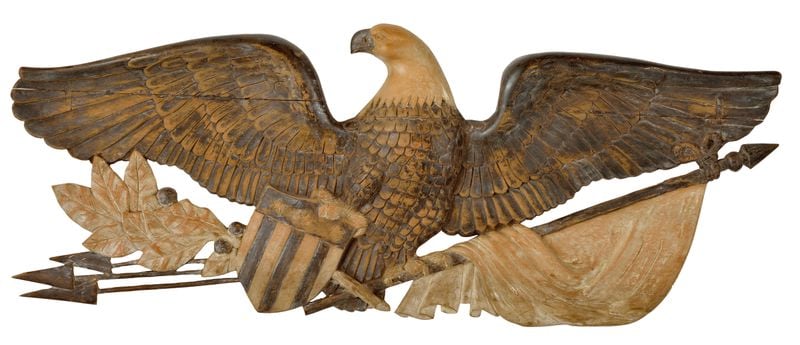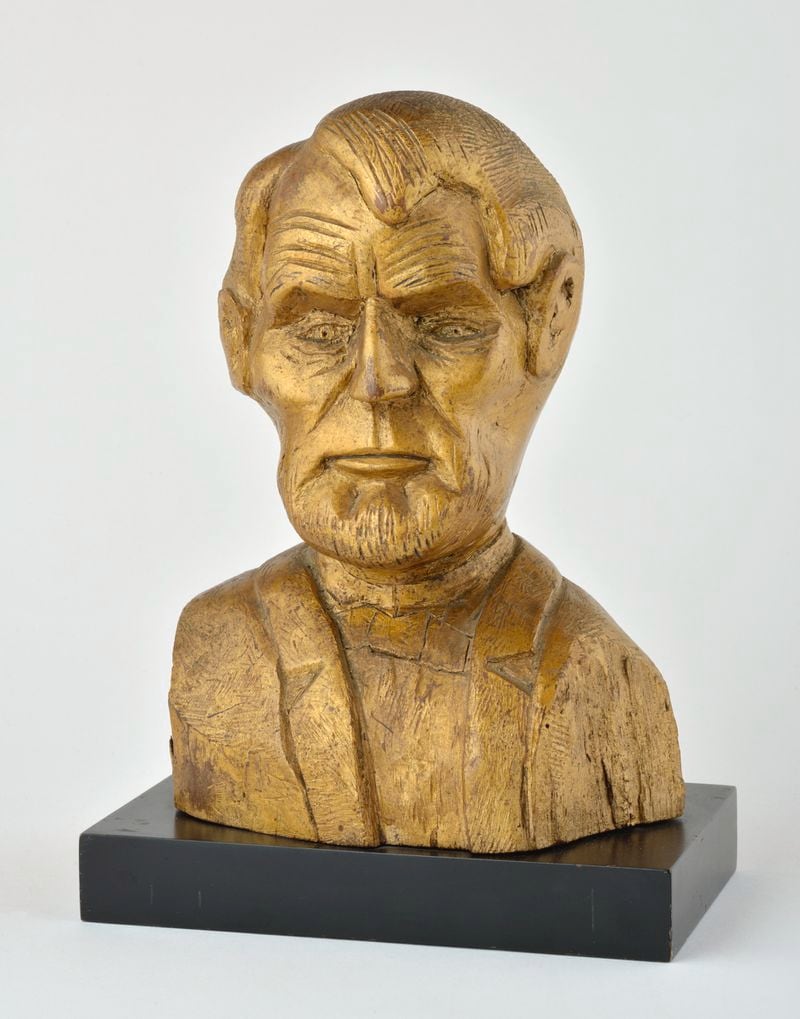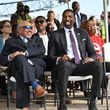Given that 2020 was one of the most remarkable years in American politics in recent memory, it seems fitting that the High Museum has received a significant gift of folk art that centers the nation’s political history.
A collection of 114 wooden sculptures by self-taught artists was recently given to the High by Connecticut folk art collectors Anne and Robert Levine, the museum announced this week. Most of the artists are unknown, but the collection of their work will immediately lift the museum’s overall folk art and self-taught art holdings, museum curators and a prominent art historian said.
Until now, the museum’s collection of about 1,400 folk art sculptures, ceramics and paintings, was created by artists from the 1970s forward. But the Levines’ collection, acquired by the couple over the last nearly 40 years, spans four centuries, from the 1600s to 2000.
“This collection is incredibly important for us, just because it fills in this kind of gap that we had for historical folk art,” said Katie Jentleson, curator of folk and self-taught art at the High. “Now we have the ability to really demonstrate the way that self-taught artists in previous centuries were working, what they were interested in at the time, the ways that they were making art, the materials they used.”
Credit: Kenneth Kast
Credit: Kenneth Kast
From an idiosyncratic wooden bust of Abraham Lincoln, rough and painted gold, to an intricate diorama of Franklin Delano Roosevelt’s first cabinet meeting during the Great Depression of the 1930s, the Levine collection leans heavily on political figures and social leaders who shaped the nation.
“It is rare to see such a highly curated collection,” said Dr. Valérie Rousseau, senior curator at the American Folk Art Museum. “Nobody can capture the unconscious of a society, with its polarities and contradictions, like folk artists, and I can only imagine the compelling interpretative opportunities these particular works will provide to the High.”
Elizabeth Stillinger, folk art historian and author of several books on the topic including, “A Kind of Archeology: Collecting American Folk Art 1876-1976,” also said the collection is unusual for its strong focus on politics. But for the High, the tight theme will likely “add another string to their bow,” Stillinger said, especially when the works are paired in exhibits with other pieces from the museum’s overall permanent collection.
“They might be able now to draw conclusions about the culture and society that they couldn’t before,” Stillinger said. “How they think about the United States and its development.”
Jentleson said the museum had long been interested in the Levines’ collection, especially for its potential to be in dialogue with the institution’s other holdings. The Levines’ decision to only collect wooden works of political or historical theme, while incredibly disciplined, is also a boon for the High in that it could give the museum a specific area of folk art to build on, Jentleson said.
Presidents are well represented in the collection, with several examples of George Washington and Abraham Lincoln likenesses. The gilt bust of Lincoln is an example of what made folk art rise in importance among early collectors of the genre after World War I, Jentleson said. Lincoln’s face, already idiosyncratic, is made more so by an unknown maker, who after rendering the 16th president, gilded the piece.
Credit: Kenneth Kast
Credit: Kenneth Kast
“There was a feeling that American artists by the 20th century still had not fully distinguished themselves from European artists, like they were doing things that were derivative,” Jentleson said. “So, a lot of collectors turned to folk art as being something they thought was uniquely American because of how it embodied the democratic spirit of the country, that anyone can be part of it. And it had formal qualities that were a lot like what was happening in modern art at the time; things were getting really abstract and geometric and rough.”
But then there are pieces in the new collection by self-taught artists that are by turns highly refined, such as the diorama of FDR’s cabinet. The 32nd president is seated in the cabinet room at the center of a grand semicircle table, flanked by 10 cabinet members including Frances Perkins, the Secretary of Labor and first woman named to a cabinet post. Rendered by Moise Potvin, a Canadian-born, Rhode Island-reared violin maker by trade, the details of the room are intricate down to the pens in upright holders on the desks, to Perkins’ signature hat. The miniature light bulbs in the chandelier in the center of the domed ceiling still light up.
“It’s just really one of his standouts and his work is very rare,” Jentlesen said.
There are also a number of kinetic sculptures or whirly-gigs in the new collection and a few sculptures of pop culture icons, such as Elvis Presley. And in some ways, even that is political. Presley visited the White House 50 years ago on Dec. 21, 1970, and met with a soon-to-be-embattled president, who would later leave office in infamy and disgrace. But on that day, Presley, in a purple velvet suit and Richard M. Nixon smiled as they shook hands and posed for photos.
About the Author








